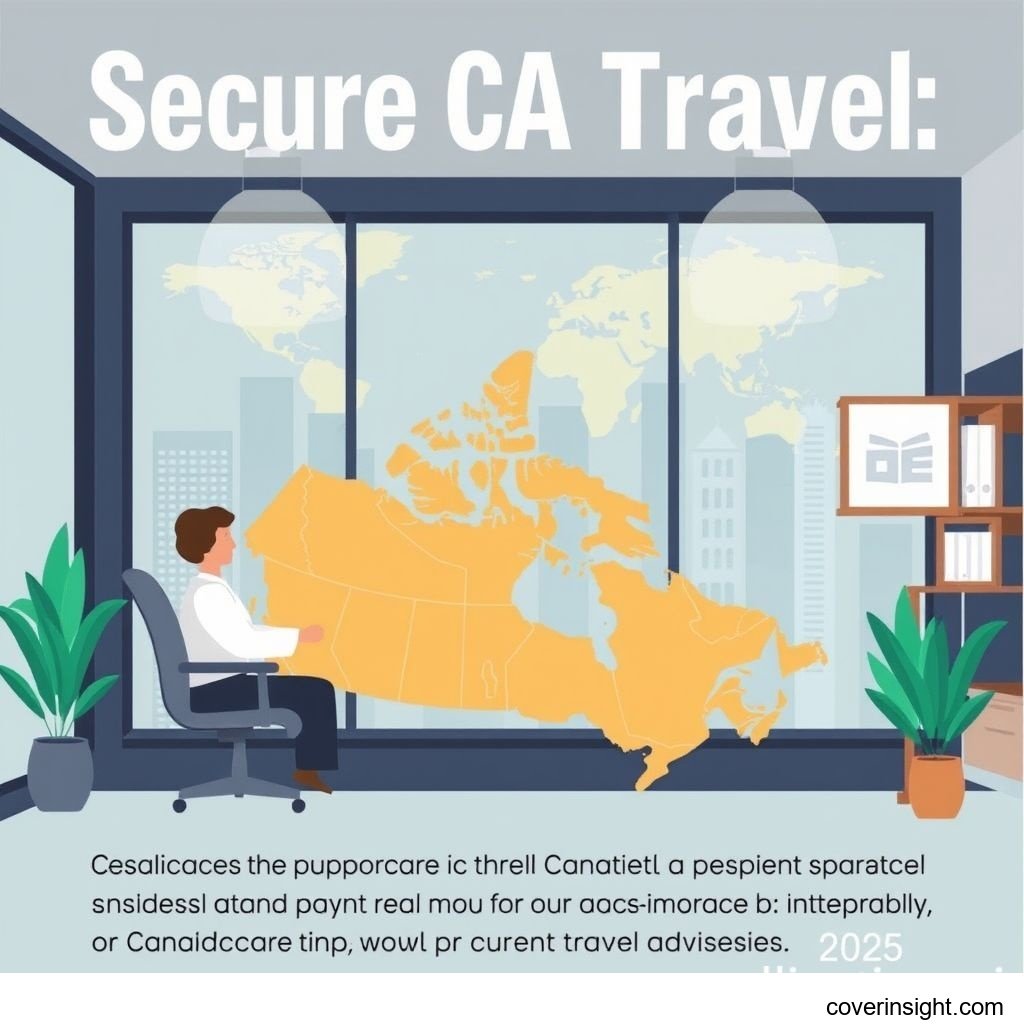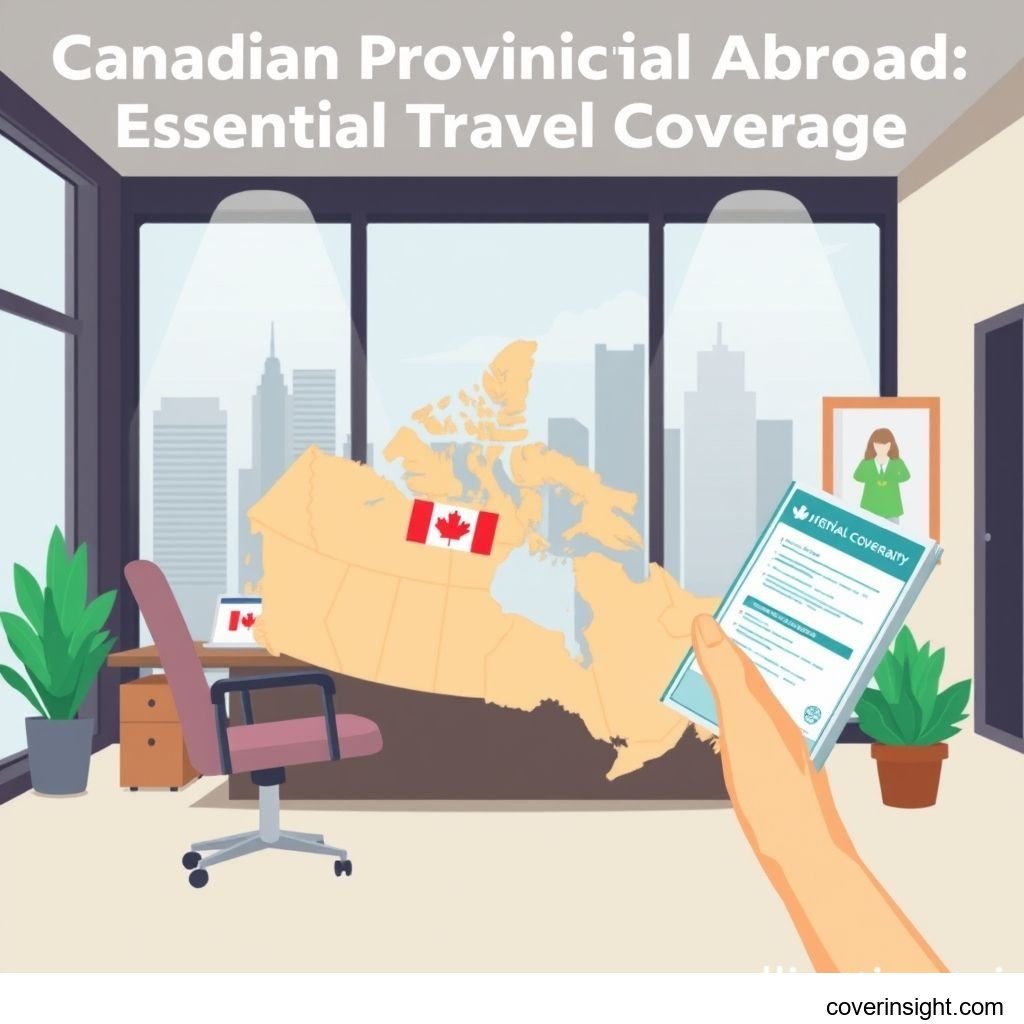Canadian Travel Medical: Essential 2025 Coverage Guide
Introduction
As Canadians, we often feel a sense of security thanks to our robust provincial health coverage. However, when we venture outside our home province – especially internationally – that shield becomes significantly thinner, sometimes barely a paper-thin promise. For 2025, it's crucial to understand that while your provincial health plan offers some minimal assistance for out-of-country medical emergencies, it rarely covers the full cost, leaving you vulnerable to potentially crippling medical bills. Think of it this way: your provincial health coverage might cover a fraction of a doctor's visit abroad, but it certainly won't cover a multi-day hospital stay or an emergency air ambulance back home, which can run into the tens or even hundreds of thousands of dollars. This is precisely why obtaining comprehensive travel medical insurance isn't just a good idea for your peace of mind; it's an absolute necessity. For more general insurance advice, you can always check out CA Insurance Home.
Coverage Details
Navigating the world of travel medical insurance can feel like deciphering a foreign language, but understanding what's typically included and excluded is your first step to being well-prepared.
What’s Included
A solid travel medical policy is designed to cover unexpected medical emergencies that occur while you're away from home. Key inclusions generally cover:
-
Emergency Hospitalization & Medical Treatment: This is the big one, covering costs for hospital stays, doctor's visits, diagnostic tests (X-rays, MRIs), and surgeries resulting from an unforeseen illness or injury.
-
Emergency Medical Evacuation: Should your medical condition require specialized care not available locally, or if you need to be transported to the nearest appropriate medical facility, this covers the often exorbitant costs of air or ground ambulance.
-
Repatriation of Remains: While grim to consider, this covers the costs of returning your body home in the event of an unfortunate death abroad.
-
Prescription Drugs: Coverage for medications prescribed by a doctor for an emergency medical condition.
-
Accidental Dental: Immediate relief for sudden, accidental injury to natural teeth, typically up to a certain limit.
-
Paramedical Services: Coverage for services like chiropractors, physiotherapists, or osteopaths, often up to a set amount per visit or total.
Common Exclusions
Just as important as knowing what's covered is understanding what isn't. Skipping over the exclusions can lead to nasty surprises. Common ones include:
-
Pre-existing Conditions: This is often the biggest hurdle. Policies typically exclude conditions that were not stable and controlled for a defined period (e.g., 90-180 days) before your trip. Always disclose your medical history honestly.
-
Elective Procedures: Cosmetic surgery, routine check-ups, or non-emergency treatments are never covered.
-
High-Risk Activities: Engaging in extreme sports like heli-skiing, mountaineering, or scuba diving (beyond a certain depth) might be excluded unless you purchase an additional rider.
-
Alcohol or Drug-Related Incidents: If your medical emergency is a direct result of intoxication or substance abuse, your claim will likely be denied.
-
Travel Against Government Advisories: If Global Affairs Canada has issued a "avoid non-essential travel" or "avoid all travel" advisory for your destination, any incidents occurring there will typically not be covered.
-
Mental Health Conditions: While some policies are starting to include limited coverage for acute mental health emergencies, it's not universally guaranteed.
Cost Analysis
The cost of travel medical insurance isn't a one-size-fits-all situation; it varies widely based on several factors.
Price Factors
When you get a quote, insurers will consider:
-
Age: This is arguably the biggest determinant. Premiums tend to increase significantly with age, as older travelers are statistically more likely to experience medical issues.
-
Trip Duration: A two-week vacation will naturally cost less to insure than a six-month adventure.
-
Destination: Traveling to the United States, for instance, generally results in higher premiums due to the exorbitant cost of healthcare there. A single night in a US hospital can easily exceed $10,000. For context, while hard data on Canadian traveler medical emergencies abroad is fragmented, the Financial Consumer Agency of Canada advises that even a minor emergency in the US can cost thousands, a stark contrast to what provincial plans might reimburse.
-
Coverage Amount & Deductible: Higher coverage limits (e.g., $5 million vs. $1 million) and lower deductibles will increase your premium.
-
Pre-existing Conditions: If you have stable pre-existing conditions that are covered, you might pay a higher premium.
-
Add-ons: Coverage for specific sports, trip interruption, or lost luggage will add to the total cost.
Saving Tips
Nobody wants to pay more than they have to. Here are a few ways to potentially reduce your premiums:
-
Shop Around: Don't just go with the first quote. Use online comparison sites or consult an independent insurance broker.
-
Consider Multi-Trip Annual Plans: If you travel frequently throughout the year, an annual plan can be far more cost-effective than buying separate policies for each trip.
-
Group Policies: If you're traveling with family or a group, inquire about group rates, which can sometimes offer a discount.
-
Check Credit Card Benefits: Many premium credit cards offer some level of travel medical insurance. However, always read the fine print – these policies often have limitations on trip duration, age, and pre-existing conditions. They’re a good starting point but rarely comprehensive enough for complex trips.
-
Increase Your Deductible: If you're comfortable taking on more initial risk, choosing a higher deductible will lower your premium. Just ensure you can comfortably afford that deductible should you need to make a claim.
FAQs
How much does provincial health coverage abroad cost? Provincial health coverage doesn't cost anything extra for use abroad, as it's part of your regular provincial health plan. However, what it covers abroad is severely limited. For example, OHIP (Ontario Health Insurance Plan) typically only covers up to $400 CAD per day for inpatient services (like a hospital bed) and a very small fraction of physician fees. Compare that to the thousands of dollars a day common in places like the US, and you can see the huge gap. It's truly pennies on the dollar for what actual international medical care costs.
What affects premiums? As discussed, age, trip duration, destination, coverage amount, deductible, and pre-existing conditions are the primary factors that influence travel medical insurance premiums.
Is it mandatory? While travel medical insurance is not legally mandatory for Canadians leaving the country, it is highly, highly recommended. Some countries may require proof of insurance for entry (e.g., Schengen Area visas), but for most general tourist travel, you won't be stopped at the border for not having it. However, if you get sick or injured without it, you're on the hook for every single penny.
How to choose? Start by assessing your needs: your age, health status, where you're going, what you'll be doing, and how long you'll be gone. Then, compare policies from different providers, paying close attention to pre-existing condition clauses, coverage limits, and exclusions. Read customer reviews, and don't hesitate to call the insurer with specific questions. For broader insights into insurance, you might find more resources on Insurance Resources Global.
Consequences of no coverage? The consequences of traveling without adequate travel medical coverage can be financially devastating. A simple broken leg in a foreign country could easily cost tens of thousands of dollars. A more serious incident, like a heart attack or a major accident requiring air ambulance repatriation, can lead to bills of $100,000 to $500,000 or more. Consider the real-world example of Sarah L., a Canadian traveler who suffered a burst appendix while vacationing in Mexico. Her provincial coverage reimbursed a paltry sum, leaving her with a $40,000 bill for surgery and recovery. Thankfully, she had travel insurance, which covered the vast majority, saving her from significant financial hardship. Without it, she would have been stuck holding the bag, potentially bankrupting her family. As the Insurance Bureau of Canada often highlights, travel insurance is designed to protect you from these exact unforeseen financial disasters.
Author Insight & Experience: Based on my experience living in Canada and having traveled extensively, I've seen firsthand how quickly things can go sideways, even on a seemingly simple trip. There's a common, somewhat naive, Canadian attitude that "it won't happen to me," or that our "free" healthcare somehow extends everywhere. But as a good friend of mine from the Maritimes always says, "An ounce of prevention is worth a pound of cure." When you're far from home and facing a medical emergency, the last thing you want to worry about is a bill that could mortgage your future. Travel medical insurance isn't just a policy; it's buying peace of mind, allowing you to enjoy your travels without that looming "what if."








Comments